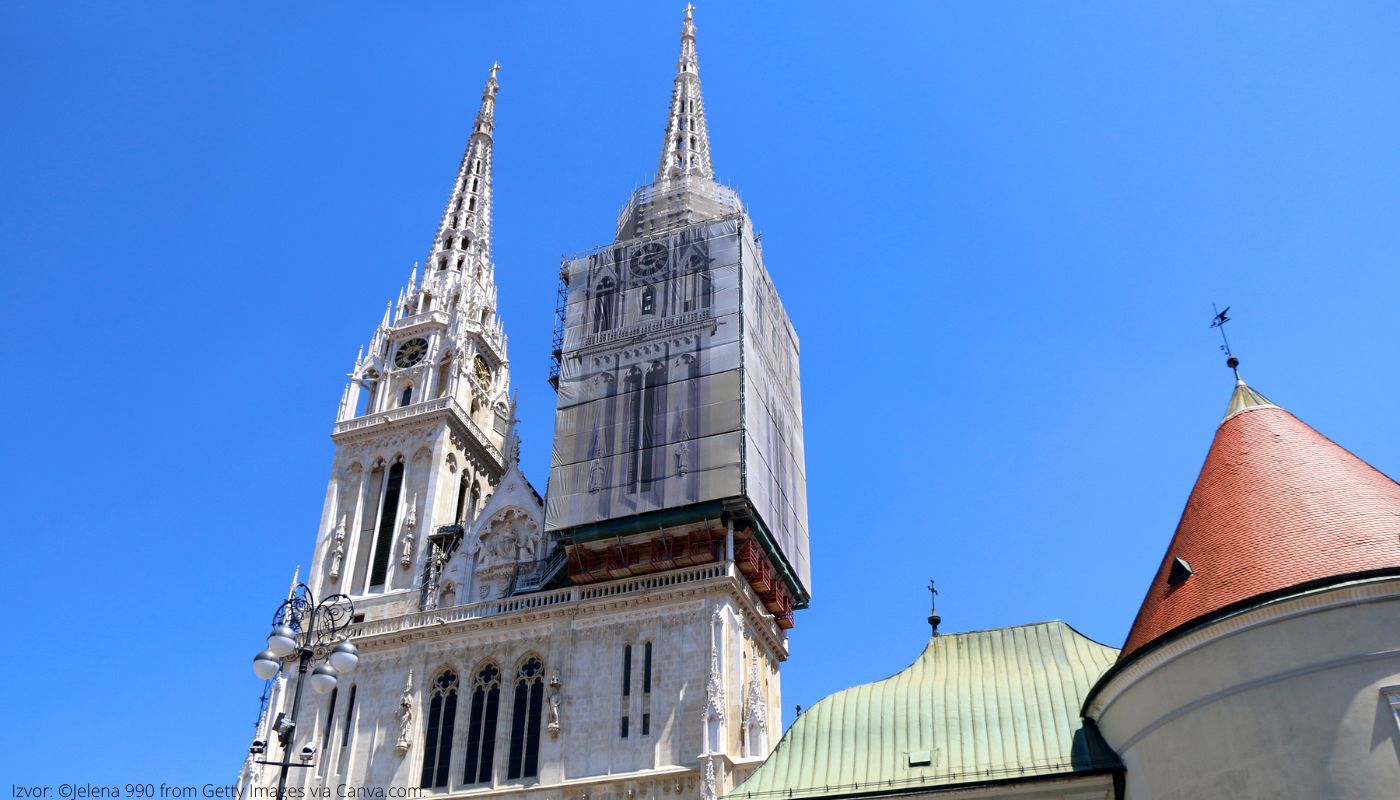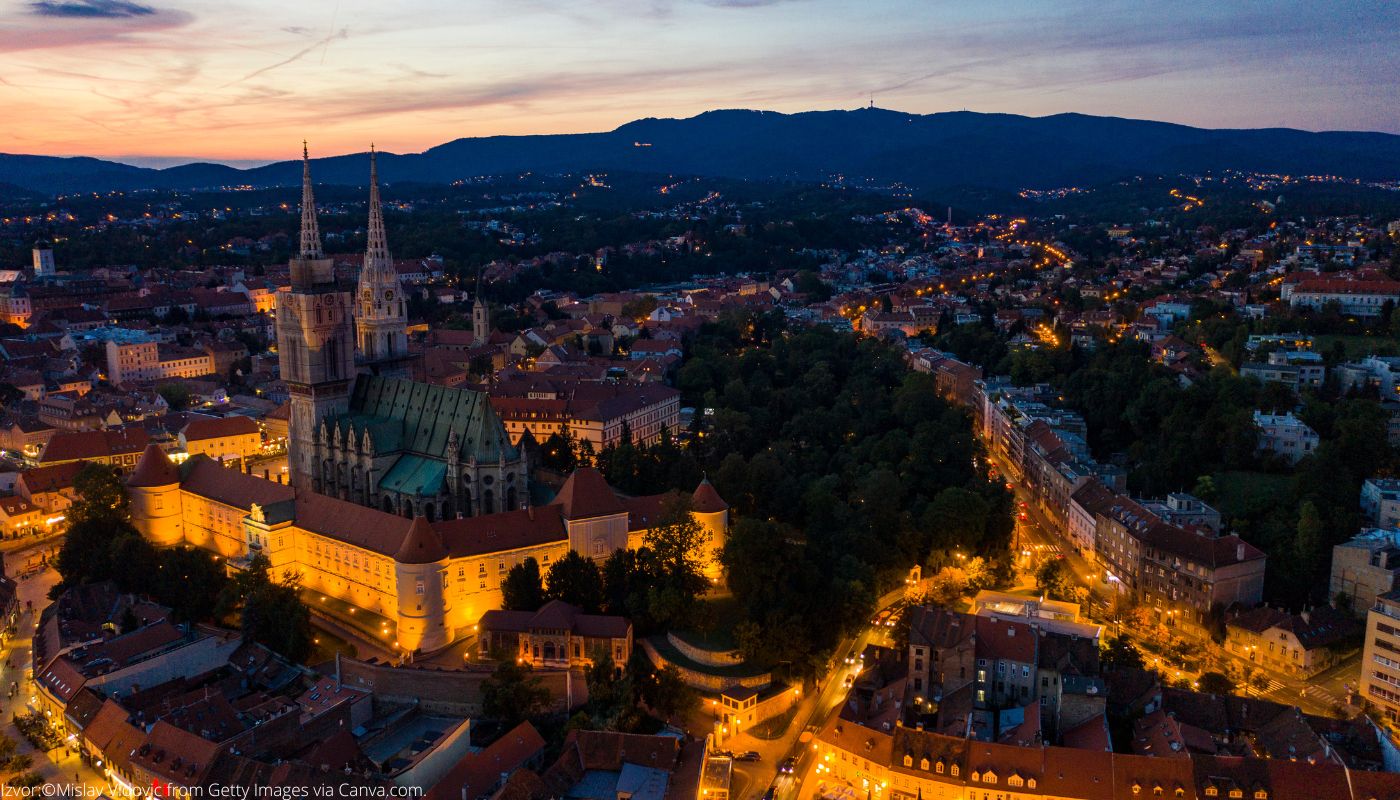Zagrebačka Katedrala - Katedrala Uznesenja Blažene Djevice Marije
Share this attraction
Back

Zagrebačka Katedrala - Katedrala Uznesenja Blažene Djevice Marije
Zagreb
Zagreb Cathedral - Most important information
The Zagreb Cathedral is in the central part of Zagreb, surrounded by imposing buildings and structures. The full name of this Catholic cathedral is the Cathedral of the Assumption of the Blessed Virgin Mary and Saints Stephen and Ladislav. It represents one of Croatia's most significant and prominent cultural and historical buildings.
History of the Zagreb Cathedral
The beginnings of the construction of the Zagreb Cathedral date back to the 11th century when King Ladislav founded the Zagreb diocese. The cathedral was then built in the Romanesque-Gothic style, and after the great attack of the Tatars, it was rebuilt in the Gothic style. In the 16th century, the cathedral received a Renaissance tower, and different walls also surrounded it. Throughout history, this magnificent building faced Turkish attacks, severe earthquakes, and fires, which destroyed it on several occasions. The biggest earthquake occurred in 1880 when the cathedral's vaults wholly collapsed, and on that occasion, the church's altars, floor, and bell tower were also damaged. The church was later significantly damaged in 2020 during a strong earthquake when the south tower fell and significantly damaged the building of the Archbishop's Palace. The restoration of the church continues to this day, and most of the income comes from the faithful who generously support the restoration of the cathedral.
Significance of the Zagreb Cathedral
History of the Zagreb Cathedral
The beginnings of the construction of the Zagreb Cathedral date back to the 11th century when King Ladislav founded the Zagreb diocese. The cathedral was then built in the Romanesque-Gothic style, and after the great attack of the Tatars, it was rebuilt in the Gothic style. In the 16th century, the cathedral received a Renaissance tower, and different walls also surrounded it. Throughout history, this magnificent building faced Turkish attacks, severe earthquakes, and fires, which destroyed it on several occasions. The biggest earthquake occurred in 1880 when the cathedral's vaults wholly collapsed, and on that occasion, the church's altars, floor, and bell tower were also damaged. The church was later significantly damaged in 2020 during a strong earthquake when the south tower fell and significantly damaged the building of the Archbishop's Palace. The restoration of the church continues to this day, and most of the income comes from the faithful who generously support the restoration of the cathedral.
Significance of the Zagreb Cathedral
- Exceptional cultural and historical influence: Zagreb Cathedral is one of the largest and most recognizable symbols in the entire city. Many greats of Croatian history are buried inside the cathedral, such as Croatian ban Petar Zrinski, Prince Fran Krsta Frankopan, and several Zagreb archbishops. The cathedral's towers can be seen from any part of the city.
- Treasury of the Zagreb Cathedral: The treasury of the Zagreb Archdiocese was established at its foundation. One of the oldest documents testifying to the existence of the archdiocese, called the Felician Charter from 1134, is kept there. It is the oldest document between the Sava and Drava rivers, and it talks about the creation of the Zagreb Archdiocese 40 years after its foundation. Various liturgical books, ritual objects, and textile and metal valuables are only part of this cathedral's entire treasury and wealth. All those objects are still used today and represent an authentic representation of the development of Catholicism and the cathedral itself through the centuries.
View of the Zagreb Cathedral
The cathedral is 46 meters wide, while its length is 77 meters. Its internal area is 1617 m2 and can accommodate up to 5000 people. It had two magnificent church belfries (towers) until the great earthquake. The cathedral bell towers have eight bells; by far, the largest bell is the bell of the Holy Trinity, weighing as much as 6.5 tons. Travertine stone is used for the construction and renovation of the cathedral, which is brought all the way from Rome.
How to get to Zagreb Cathedral?
The Zagreb Cathedral is highly convenient, so getting to it is accessible from any direction. Different city districts surround it, and several bus stops are nearby.
The cathedral is 46 meters wide, while its length is 77 meters. Its internal area is 1617 m2 and can accommodate up to 5000 people. It had two magnificent church belfries (towers) until the great earthquake. The cathedral bell towers have eight bells; by far, the largest bell is the bell of the Holy Trinity, weighing as much as 6.5 tons. Travertine stone is used for the construction and renovation of the cathedral, which is brought all the way from Rome.
How to get to Zagreb Cathedral?
The Zagreb Cathedral is highly convenient, so getting to it is accessible from any direction. Different city districts surround it, and several bus stops are nearby.
- On foot: It is possible to walk to the Zagreb Cathedral from any part of the city since it is central to Zagreb. Kaptol street is close to the cathedral, while on the other side, it can be reached via Trg Josipa Langa street.
- By bus: The Kaptol bus stop is located 130 meters from the cathedral, in front of the St. Anthony bookstore. The operating lines are 105, 106, 201, 203, 226, and 238.
























